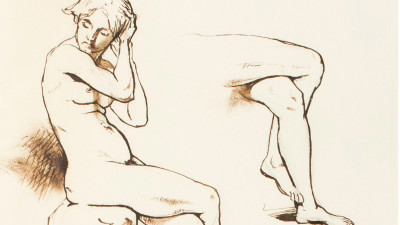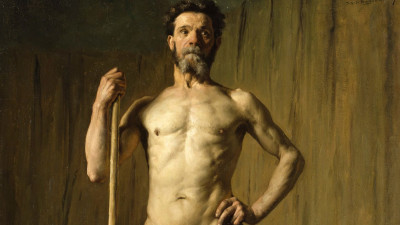“History of Art has never been more relevant than in 2016”
The Opinion
By Michael White, Head of History of Art at York University
Published 18 October 2016
With art gallery attendance at record levels and global events putting pressure on cross-cultural understanding, History of Art is a more vital subject than ever. The decision to axe its A Level may be a sad sign of things to come, says guest columnist Professor Michael White.
-
What a difference a few weeks makes. Last month I attended the 34th World Congress of Art History in Beijing. The conference was formally opened in the Diaoyutai State Guesthouse (think something along the lines of Chequers), where we were addressed by the Deputy Minister for Education. He told us of his deep respect for the subject and his ambition for it to spread throughout the Chinese education system. In addition to delegates from every corner of the world, during the conference I met a great many eager local students, some of whom were researching British art and through it gaining deep insight into this country’s culture and values. I returned enthused and excited that my discipline was emerging as a true world subject.
The news that broke at the end of last week, then, that History of Art is to disappear as an A-level subject in England and Wales, was not just saddening, it was quite baffling. Never has History of Art been a more vital and relevant subject than today, when gallery attendances are at record levels and intercultural understanding is being tested so severely by world events.
The only thing more disappointing than the abrupt decision of the AQA awarding body to discontinue History of Art has been the terms of the ensuing discussion. In 2014, having singled out History of Art in a speech as a subject with little use value in the job market, President Obama famously wrote a note of apology. Although well-meaning and supportive, in fact Obama’s apology managed only to reiterate in a more polite way his perception of its uselessness.
-
Who is going to care for the nation’s cultural treasures – the storehouse of its identity? Who will communicate their significance through exhibitions and publications to the huge audiences hungry to learn about them?
-
We seem to be stuck in a very similar pattern in the UK, where History of Art has become the go-to subject for malign comment and not even from obvious sources (jokes on the News Quiz, The Guardian, for example). It’s the victim, in my view, of a double misrecognition – of both what the subject is and the nature of education itself. If school examinations cannot accommodate the systematic study of one of the primary expressions of human experience, that says more about our educational values than History of Art. Since its formal emergence in the 19th century, History of Art has continued to offer the most rigorous interrogation of the visual sphere.
The most perverse aspect of the whole situation, though, is that it coincides precisely with the launch of the Global Challenges Research Fund, a staggering £1.5 billion of targeted government funding on themes of global reach. For its part, the Arts and Humanities Research Council has placed “Culture and Heritage” at the very centre of its agenda, under headings such as “language, cross-cultural communication, multi-culturalism and identities” and “preserving and learning from cultural memory.”
What does it say about this country’s own attitudes to identity and cultural memory, if it does not value a subject such as History of Art? And where on earth will it find future researchers capable of engaging with these issues, if it does not nurture them in its education system?
Who is going to care for the nation’s cultural treasures – the storehouse of its identity? Who will communicate their significance through exhibitions and publications to the huge audiences hungry to learn about them? There is only one answer. Other nations will take the lead in defining the terms of culture and will ultimately become the arbiters of cultural memory, including this country’s own.
-
-

Update! A Level History of Art saved
New History of Art A Level to be offered from September 2017
We’re delighted to announce that Pearson have confirmed they will develop a new History of Art A level to be taught from September 2017, following discussions between the exam board, the government and stakeholders across the subject.
Charles Saumarez Smith, Secretary and Chief Executive of the RA, said: “We are delighted with the news. Art history teaches rigorous analytical skills and requires students to engage not only with art but with history, literature, politics, languages and the sciences. In a culture dominated by the visual, there is a powerful argument that we need such skills more than ever.”
-
-
Michael White is the Head of the History of Art department at York University. He was the curator of Tate Liverpool’s 2014 exhibition, Mondrian and his Studios, and is the author of books including Generation Dada: the Berlin Avant-Garde and the First World War.
Read what Cornelia Parker RA and other cultural figures wrote about this issue in the Guardian.
What do you think? Should History of Art A Level be offered? Share your view below.




